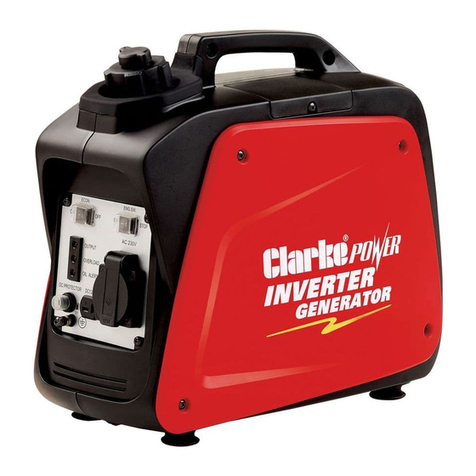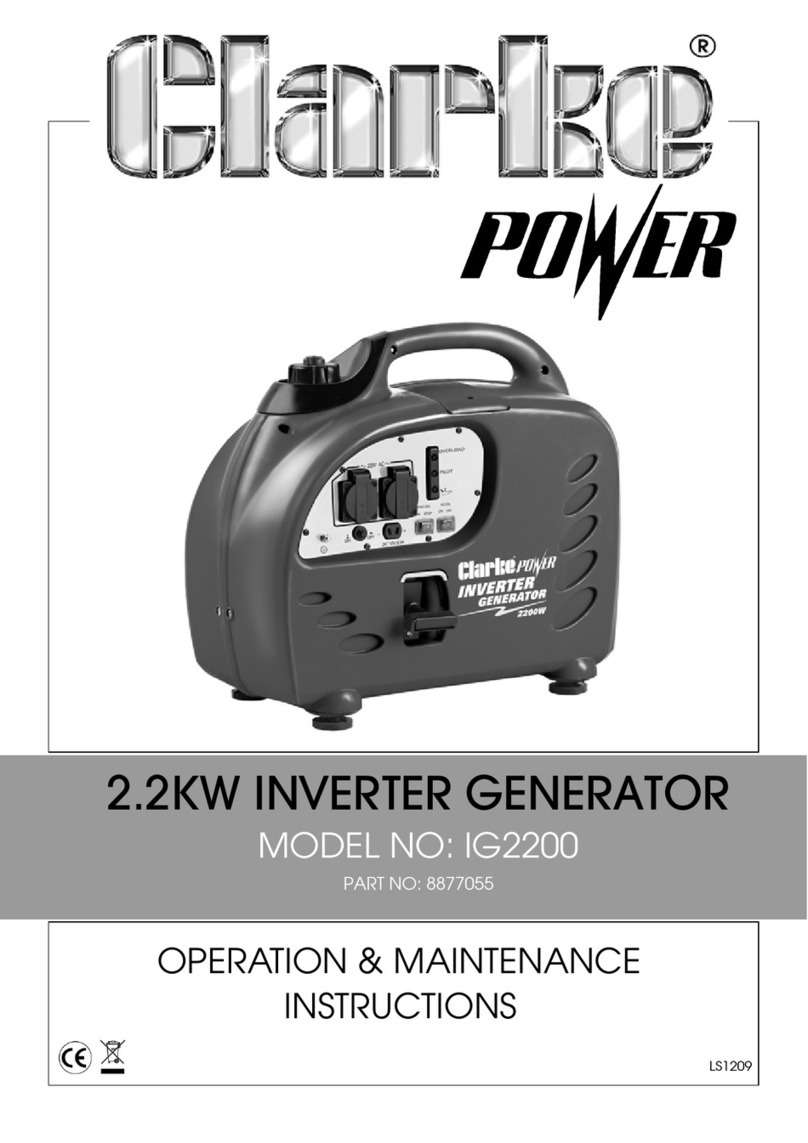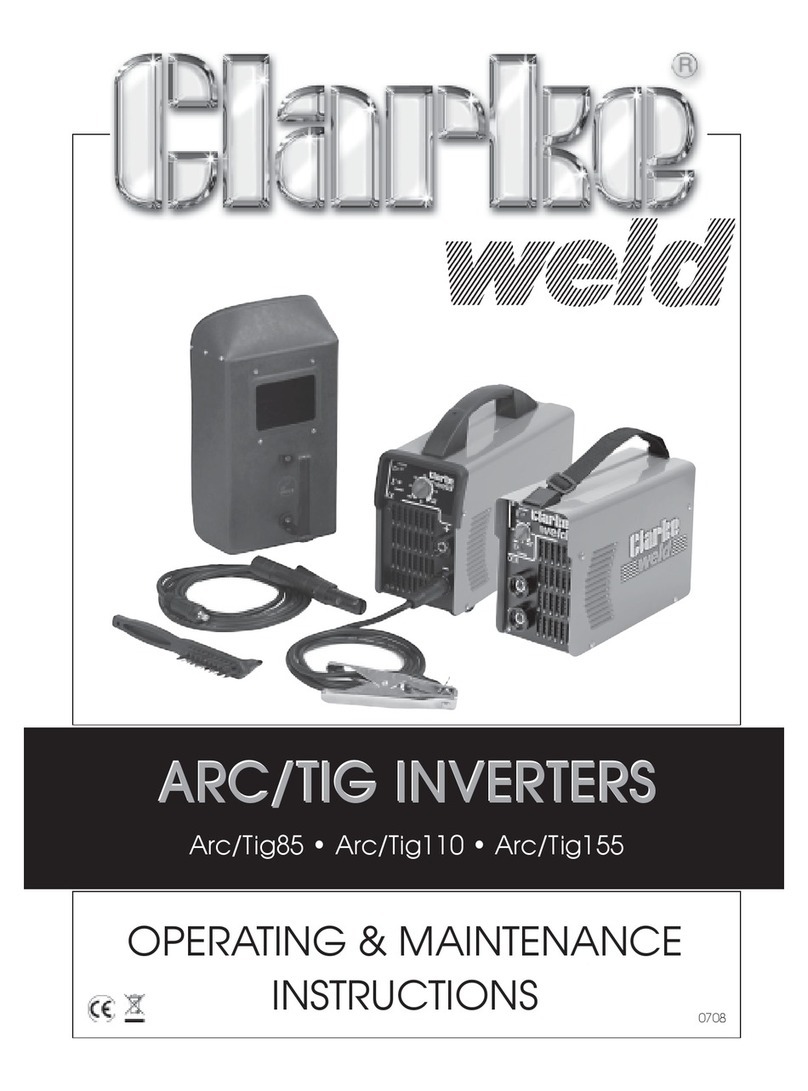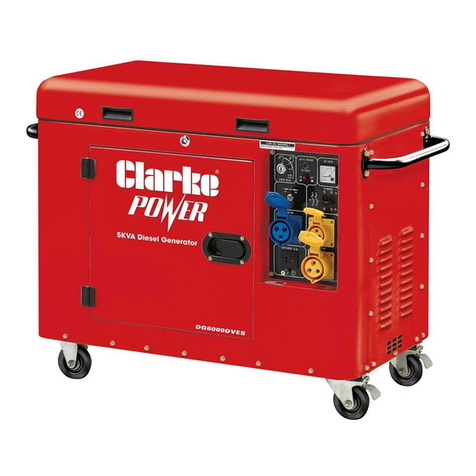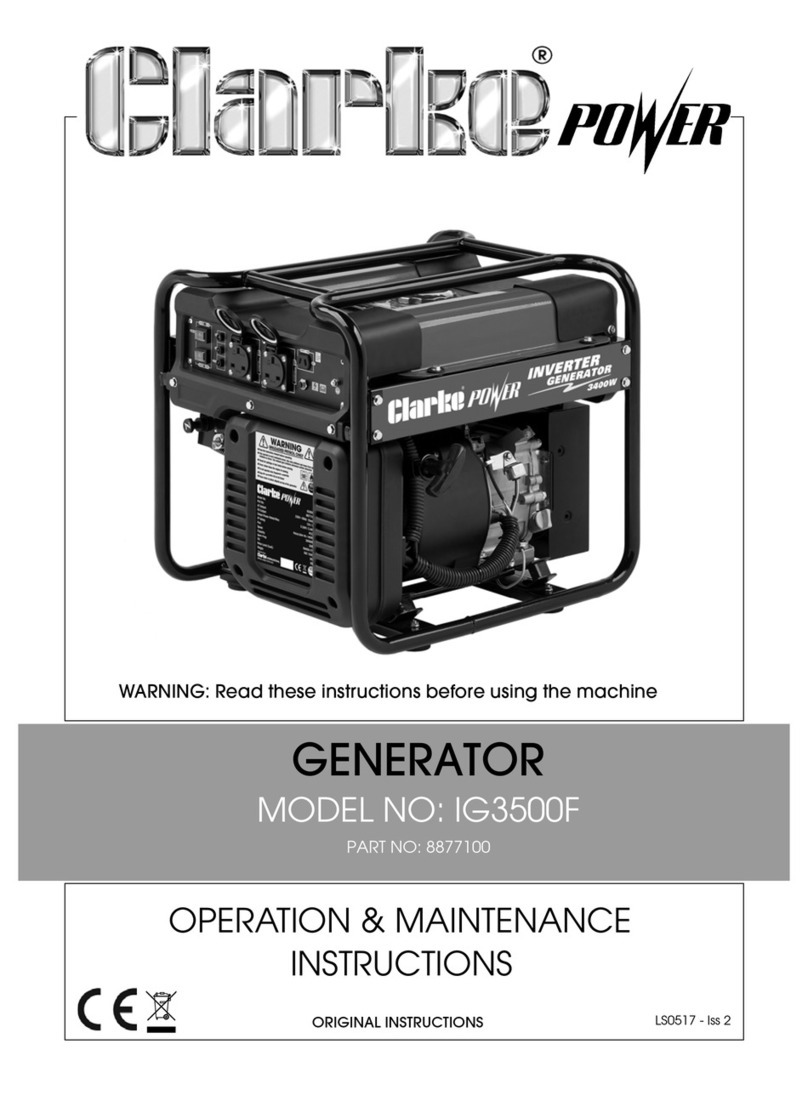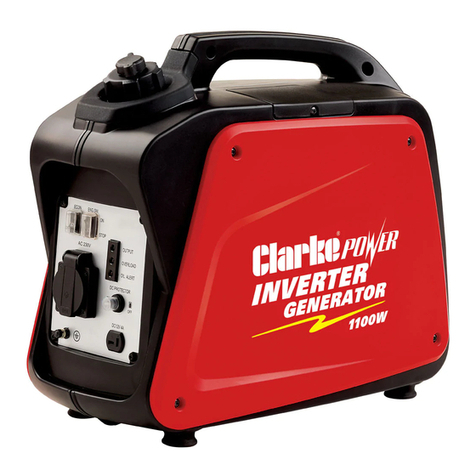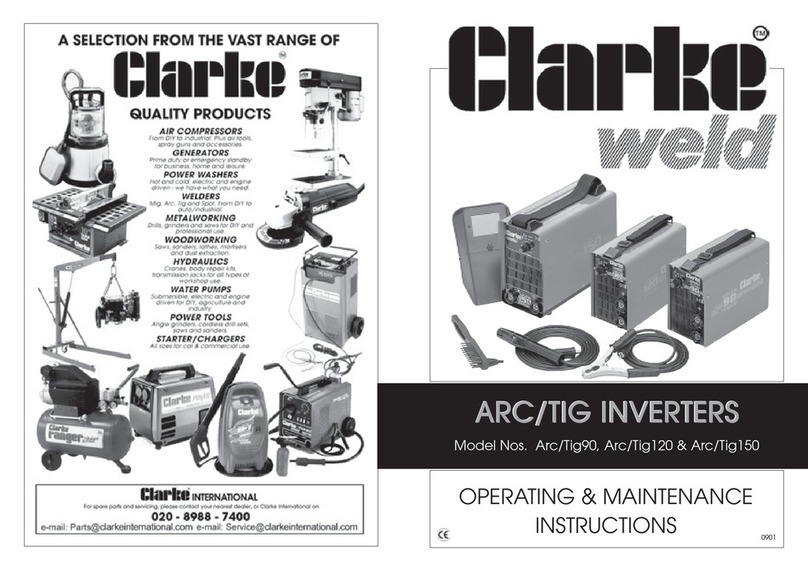
3
GENERAL SAFETY PRECAUTIONS
WARNING: TO ENSURE RELIABLE SERVICE FROM YOUR POWER INVERTER,
YOU MUST ENSURE IT IS INSTALLED AND USED ACCORDING TO THESE
OPERATOR INSTRUCTIONS, PLEASE READ THESE INSTRUCTIONS
THOROUGHLY BEFORE ATTEMPTING TO USE THE INVERTER.
PERSONAL SAFETY
1. ALWAYS stay alert, watch what you are doing and use common sense
when using this product. Do not use the product when you are tired or
under the influence of medication, drugs or alcohol. A moment of
inattention can result in personal injury.
2. ALWAYS thoroughly familiarise yourself with this product & its operation,
and always read and understand the instructions and warnings in this
manual before using the equipment.
3. NEVER dismantle the unit. Always return this product to the dealer if any
problem is found.
4. ALWAYS have the unit repaired by your local CLARKE dealer, using only
identical replacement parts. This will ensure the safety of the unit is
maintained. The use of non standard parts could be hazardous.
5. DO NOT use with positive earth systems (most modern vehicles, lorries,
boats etc, are negative earth). Reverse polarity connection will result in a
blown fuse and may cause permanent damage to the inverter.
6. DO NOT use in a wet environment.
7. DO NOT install inside an engine compartment - the inverter must always
be installed in a well ventilated area.
8. DO NOT use in potentially explosive atmospheres such as garage
forecourts etc.
9. NEVER connect to an AC supply.
10. ALWAYS disconnect the appliance from the inverter before making
adjustments to the appliance being run.
11. This inverter is not tested for use with medical devices.
This CLARKE product has been designed to give long and trouble free
service. If, however, having followed the instructions in this booklet carefully,
you encounter problems, take the unit to your local CLARKE dealer.
ENVIRONMENTAL PROTECTION
Do not dispose of this product with general household waste. All tools,
accessories and packaging should be sorted, taken to a recycling
centre and disposed of appropriately.

